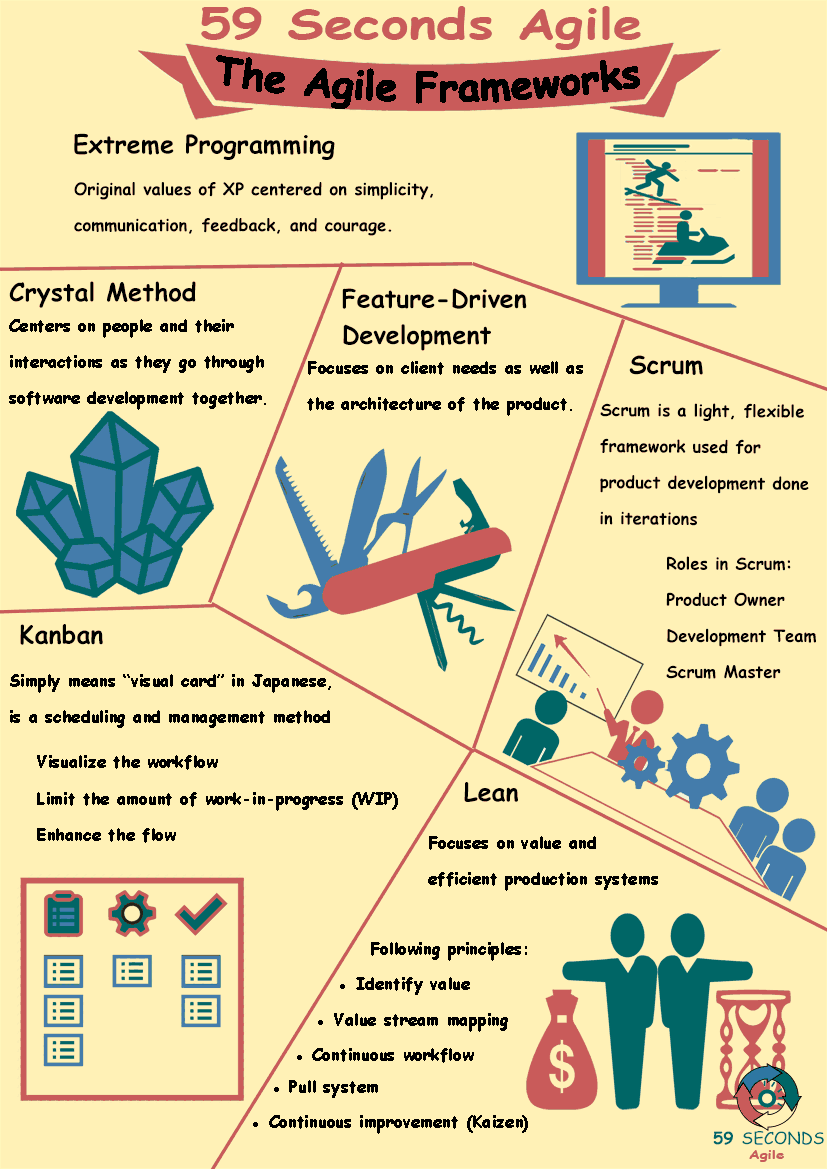This article provides an ‘Introduction to Waste Management in Lean Frameworks’ and looks to discuss what waste management is within the Lean Framework.
Agile Development Frameworks
A 59 Seconds Agile Training Video
Continue to Part 7 Below
Agile Development Frameworks
A 59 Seconds Agile Article
Waste Management in Lean Frameworks
Lean works to cut down on waste, which saves your company money. There are seven different wastes that can be eliminated by adapting the lean framework: transport, or moving the product from one process to the next, which adds no value to the end product; overproduction, which creates more cost and hinders the flow of materials; waiting, which occurs when processes are waiting for each other; unnecessary inventory, which hides problems and if problems are hidden, they can’t be solved; unnecessary processing, or using overcomplicated, expensive equipment to do a simple job; unnecessary motion of machines or employees, which, like transport, adds no value to the end product; and defects, which are minimized by strict quality control and standardized work plans.
Waste Management in Lean Frameworks: 7 Wastes
With these seven types of waste eliminated, your company starts producing more products at a faster rate and higher quality, while cutting expenses. Because you’re doing so well, the teams are confident in their work and are coming up with even more creative ways to build products and solve problems.
Continue Reading —> Next
The Agile Development Frameworks
A 59 Seconds Agile Video Animation
Continue Reading —> Next
User Stories Applied
A 59 Seconds Agile Book Review
User Stories Applied by Mike Cohn is one of our favourite books on Agile User Stories. The book starts with an overview into user stories, and details what a user story is and the different aspects of them. He then discusses how to go about writing a user story, and provides details of the INVEST criteria that can be used to determine if the story is meeting all of its objectives. Next Mike gives an in depth discussion of who user stories are written for and where to begin when gathering the details for them. The book then discusses acceptance testing user stories, including how to go about specifying these criteria and the responsibilities of the development team and customers during this process.
Continue Reading —> Next
The Agile Frameworks
A 59 Seconds Agile Infographic

Continue Reading —> Next
Agile Scrum Master Training Course
Our Favourite Agile Books
We found these books great for finding out more information on Agile Scrum:
Continue Reading —> Next

